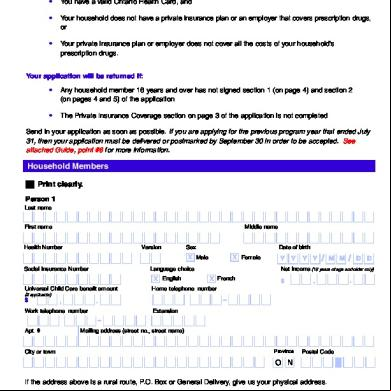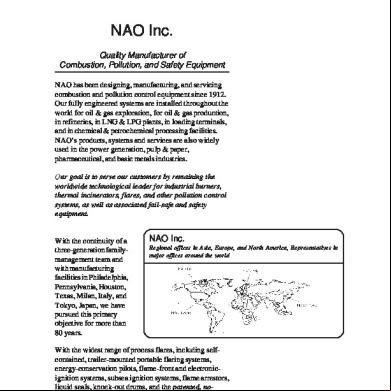Chapter # 17: Raising Capital 5v4k2d
This document was ed by and they confirmed that they have the permission to share it. If you are author or own the copyright of this book, please report to us by using this report form. Report 3i3n4
Overview 26281t
& View Chapter # 17: Raising Capital as PDF for free.
More details 6y5l6z
- Words: 861
- Pages: 16
Chapter 17 •Dividends and Dividend Policy
McGraw-Hill/Irwin
Copyright © 2006 by The McGraw-Hill Companies, Inc. All
Cash Dividends • Regular cash dividend – cash payments made directly to stockholders, usually each quarter • Extra cash dividend – indication that the “extra” amount may not be repeated in the future • Special cash dividend – similar to extra dividend, but definitely won’t be repeated • Liquidating dividend – some or all of the business has been sold 18-2
Dividend Payment • Declaration Date – Board declares the dividend and it becomes a liability of the firm • Ex-dividend Date • Occurs two business days before date of record • If you buy stock on or after this date, you will not receive the dividend • Stock price generally drops by about the amount of the dividend
• Date of Record – Holders of record are determined and they will receive the dividend payment • Date of Payment – checks are mailed 18-3
Does Dividend Policy Matter? • Dividends matter – the value of the stock is based on the present value of expected future dividends • Dividend policy may not matter • Dividend policy is the decision to pay dividends versus retaining funds to reinvest in the firm • In theory, if the firm reinvests capital now, it will grow and can pay higher dividends in the future 18-4
Low Payout Please • Why might a low payout be desirable? • Individuals in upper income tax brackets might prefer lower dividend payouts. • Flotation costs – low payouts can decrease the amount of capital that needs to be raised, thereby lowering flotation costs • Dividend restrictions – debt contracts might limit the percentage of income that can be paid out as dividends
18-5
High Payout Please • Why might a high payout be desirable? • Desire for current income • Individuals that need current income, i.e. retirees • Groups that are prohibited from spending principal (trusts and endowments)
• Uncertainty resolution – no guarantee that the higher future dividends will materialize • Taxes • Dividend exclusion for corporations • Tax-exempt investors don’t have to worry about differential treatment between dividends and capital gains 18-6
Dividends and Signals • Asymmetric information – managers have more information about the health of the company than investors • Changes in dividends convey information • Dividend increases • Management believes it can be sustained • Expectation of higher future dividends, increasing present value • Signal of a healthy, growing firm
• Dividend decreases • Management believes it can no longer sustain the current level of dividends • Expectation of lower dividends indefinitely; decreasing present value • Signal of a firm that is having financial difficulties 18-7
Clientele Effect • Some investors prefer low dividend payouts and will buy stock in those companies that offer low dividend payouts • Some investors prefer high dividend payouts and will buy stock in those companies that offer high dividend payouts
18-8
Dividend Policy in Practice • Constant growth dividend policy – dividends increased at a constant rate each year • Constant payout ratio – pay a constant percent of earnings each year • Residual dividend policy • Compromise dividend policy
18-9
Residual Dividend Policy • Determine capital budget • Determine target capital structure • Finance investments with a combination of debt and equity in line with the target capital structure • that retained earnings are equity • If additional equity is needed, issue new shares
• If there are excess earnings, then pay the remainder out in dividends 18-10
Example – Residual Dividend Policy • Given • Need $5 million for new investments • Target capital structure: D/E = 2/3 • Net Income = $4 million
• Finding dividend • 40% financed with debt (2 million) • 60% financed with equity (3 million) • NI – equity financing = $1 million, paid out as dividends 18-11
Compromise Dividend Policy • Goals, ranked in order of importance • Avoid cutting back on positive NPV projects to pay a dividend • Avoid dividend cuts • Avoid the need to sell equity • Maintain a target debt/equity ratio • Maintain a target dividend payout ratio
• Companies want to accept positive NPV projects, while avoiding negative signals 18-12
Stock Repurchase • Company buys back its own shares of stock • Tender offer – company states a purchase price and a desired number of shares • Open market – buys stock in the open market
18-13
Information Content of Stock Repurchases • Stock repurchases send a positive signal that management believes that the current price is low • Tender offers send a more positive signal than open market repurchases because the company is stating a specific price • The stock price often increases when repurchases are announced 18-14
Stock Dividends • Pay additional shares of stock instead of cash • Increases the number of outstanding shares • Small stock dividend-Less than 20 to 25% • Large stock dividend – more than 20 to 25%
18-15
Stock Splits • Stock splits – essentially the same as a stock dividend • Stock price is reduced when the stock splits • Forward split • Reverse Split
18-16
McGraw-Hill/Irwin
Copyright © 2006 by The McGraw-Hill Companies, Inc. All
Cash Dividends • Regular cash dividend – cash payments made directly to stockholders, usually each quarter • Extra cash dividend – indication that the “extra” amount may not be repeated in the future • Special cash dividend – similar to extra dividend, but definitely won’t be repeated • Liquidating dividend – some or all of the business has been sold 18-2
Dividend Payment • Declaration Date – Board declares the dividend and it becomes a liability of the firm • Ex-dividend Date • Occurs two business days before date of record • If you buy stock on or after this date, you will not receive the dividend • Stock price generally drops by about the amount of the dividend
• Date of Record – Holders of record are determined and they will receive the dividend payment • Date of Payment – checks are mailed 18-3
Does Dividend Policy Matter? • Dividends matter – the value of the stock is based on the present value of expected future dividends • Dividend policy may not matter • Dividend policy is the decision to pay dividends versus retaining funds to reinvest in the firm • In theory, if the firm reinvests capital now, it will grow and can pay higher dividends in the future 18-4
Low Payout Please • Why might a low payout be desirable? • Individuals in upper income tax brackets might prefer lower dividend payouts. • Flotation costs – low payouts can decrease the amount of capital that needs to be raised, thereby lowering flotation costs • Dividend restrictions – debt contracts might limit the percentage of income that can be paid out as dividends
18-5
High Payout Please • Why might a high payout be desirable? • Desire for current income • Individuals that need current income, i.e. retirees • Groups that are prohibited from spending principal (trusts and endowments)
• Uncertainty resolution – no guarantee that the higher future dividends will materialize • Taxes • Dividend exclusion for corporations • Tax-exempt investors don’t have to worry about differential treatment between dividends and capital gains 18-6
Dividends and Signals • Asymmetric information – managers have more information about the health of the company than investors • Changes in dividends convey information • Dividend increases • Management believes it can be sustained • Expectation of higher future dividends, increasing present value • Signal of a healthy, growing firm
• Dividend decreases • Management believes it can no longer sustain the current level of dividends • Expectation of lower dividends indefinitely; decreasing present value • Signal of a firm that is having financial difficulties 18-7
Clientele Effect • Some investors prefer low dividend payouts and will buy stock in those companies that offer low dividend payouts • Some investors prefer high dividend payouts and will buy stock in those companies that offer high dividend payouts
18-8
Dividend Policy in Practice • Constant growth dividend policy – dividends increased at a constant rate each year • Constant payout ratio – pay a constant percent of earnings each year • Residual dividend policy • Compromise dividend policy
18-9
Residual Dividend Policy • Determine capital budget • Determine target capital structure • Finance investments with a combination of debt and equity in line with the target capital structure • that retained earnings are equity • If additional equity is needed, issue new shares
• If there are excess earnings, then pay the remainder out in dividends 18-10
Example – Residual Dividend Policy • Given • Need $5 million for new investments • Target capital structure: D/E = 2/3 • Net Income = $4 million
• Finding dividend • 40% financed with debt (2 million) • 60% financed with equity (3 million) • NI – equity financing = $1 million, paid out as dividends 18-11
Compromise Dividend Policy • Goals, ranked in order of importance • Avoid cutting back on positive NPV projects to pay a dividend • Avoid dividend cuts • Avoid the need to sell equity • Maintain a target debt/equity ratio • Maintain a target dividend payout ratio
• Companies want to accept positive NPV projects, while avoiding negative signals 18-12
Stock Repurchase • Company buys back its own shares of stock • Tender offer – company states a purchase price and a desired number of shares • Open market – buys stock in the open market
18-13
Information Content of Stock Repurchases • Stock repurchases send a positive signal that management believes that the current price is low • Tender offers send a more positive signal than open market repurchases because the company is stating a specific price • The stock price often increases when repurchases are announced 18-14
Stock Dividends • Pay additional shares of stock instead of cash • Increases the number of outstanding shares • Small stock dividend-Less than 20 to 25% • Large stock dividend – more than 20 to 25%
18-15
Stock Splits • Stock splits – essentially the same as a stock dividend • Stock price is reduced when the stock splits • Forward split • Reverse Split
18-16










